|
|
|
Shiwasu Greetings to all readers!
Each year, for the past several years, I have begun the December newsletter reminding readers that the traditional name for the final month of the year is "Shiwasu," the characters of which (shown here) mean "teacher" and "run," with the implication being the end of the year and the attendant holiday season is so busy for everyone that even the teacher is running around, as there is too much to do to delegate to his or her subordinates. However, this year, I was struck by how incredibly fast the past year has gone. It seems like only last month I was explaining Shiwasu season.
Temporal perceptions aside, may this final newsletter of the year find all readers well. Not only is the sake-brewing season in full-bore swing, but brewers everywhere are already offering their
shinshu (new sake) for the season. Indeed, in the sake world as well, 'Tis the season!
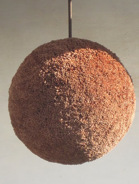 |
|
Also, the
Sake Professional Course in Japan, to be held January 21 to 25, 2013, has but a couple of seats remaning open. “No sake stone remains left unturned” in the most important activity of the year for me. It is easily the best way to learn all things sake in a very enjoyable setting. Learn more below.
Keep warm in the cold, happy holidays to all, and please enjoy the newsletter.
John
PS: Choose your e-reader! Don't forget that Sake's Hidden Stories and The Sake Notebook are both available for Kindle, Nook and the iPad! This on top of plain old PDF! See details below.
|
Lauding Toji
Giving credit where credit is due!
Recently, I read an article that came to me mysteriously by email about
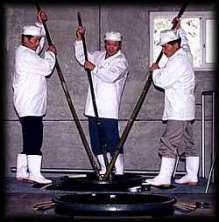 |
|
how winemakers in general deserve more attention and credit. The article suggested that too often folks fall in love with terroir, i.e. all that connects a wine to a certain place, and as such that the role of the person who actually called all the technical shots along the way gets downplayed, and that that shouldn’t be. The gist of the article was that hundreds of decisions are made between grape and bottle, and that deserves to be recognized and appreciated as well.
Which got me thinking: what about toji? Does the master brewer at a sake brewery get the credit that he or she deserves in creating a great sake?
Very often, perhaps as often as in the wine world, the person that guided and influenced the process gets very little attention or credit. It goes to the rice, or the generations of great sake that forged the reputation of the brewery, or sometimes even the region in general f’gad’s sake. Rarely, or at least not often enough, does it go to the toji.
So: Does the toji matter? Hell yes, the toji matters!
Long ago, the toji mattered, arguably, even much more than today. Back in the day, kuramoto (the brewery owners themselves) rarely even entered the brewery. And when they did, it made the brewing staff antsy, it did. “What’s he doing in the kura? He doesn’t have any business in here!” But things have changed.
Remember, back in the day, most toji brewed fairly close to home, and had but one style to aim for (the local one), and was pretty much stuck with local rice. But all that has changed. These days, toji might travel very far from home. The rice they use might be from anywhere, and brewers have a much bigger market at which to aim than the local yokels. Often, the kuramoto (the brewery owners themselves) dictate what is to be brewed, and the toji just complies. Either way, the toji is making gazillions of decisions about each fermenting tank every day.
In fact, in these modern times, there are more or less two ways of coexisting: one in which the kuramoto leaves it up to the toji and stays out of his way, and the other in which the toji brews up whatever is ordered by the kuramoto. Both are alive and well and living in Japan.
And let us also remember too that more and more often those two are the same: the kuramoto is the toji, owner-toji as they are called. As tough as this can be, it eliminates a lot of problems. (Assuming schizophrenia is not part of the equation, of course. But I digress.)
The interesting if unrequested article that came to me also touched on the concept of manipulating wines, and my own reading on that subject indicated that the jury is still out on how much or how little of this is acceptable. But it again got me thinking.
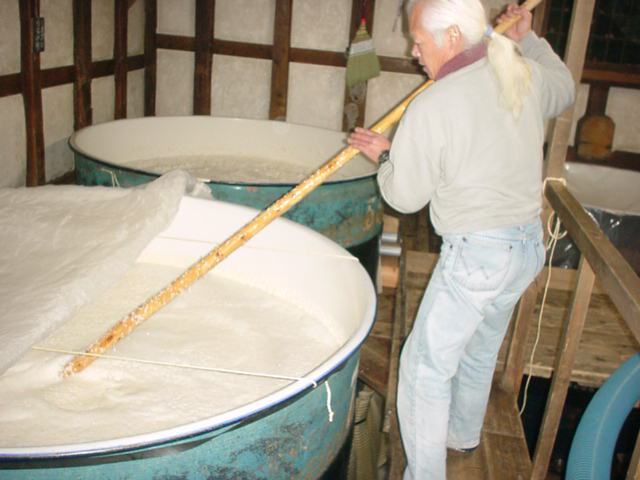 |
|
While surely the same argument can be had for sake, at least to some degree, even the most un-manipulated sake has the bejeezus manipulated out of it from start to finish. The rice is milled, soaked, steamed, molded, mixed and forced to temperature. Water is added as needed, alcohol might be added, and the mixture is pressed at the end. Each of these manhandling steps has myriad aspects that combine to become part of the aforementioned gazillion decisions.
Having said that, any toji will tell you that he or she doesn't really make sake per se, they just prepare the ingredients, create as an ideal an environment as possible for what they want to accomplish, and get out of the way. The sake brews itself, with a mind of its own.
Does a toji manipulate a sake? Hell, yes! Does it matter? Hard to say!
One owner of a somewhat large brewery once shared with me his thoughts on a what makes a great toji. After several glasses of some of his own fine hooch, he got down to the truth.
“You know what makes a great toji? I’ll tell ya what makes a great toji! Forget this gold medal
stuff. Forget the prizes.
Gold, schmold! Give me a person who year-in and year-out can deliver consistent quality of sake, the same stuff no matter what happens. No matter what the rice is like, no matter how warm the winter is, no matter what major piece of equipment breaks down in the peak of the season, no matter what personality conflicts he has in his team, and no matter who gets sick when… he still manages to brew consistent, dependable sake! Not that is a great toji”
So yes, in the final analysis, toji make a huge difference and should be lauded much more than they are.
Do some get attention? Yes,
mei-toji (famous toji) have always been a part of the industry, and there are a handful that are recognized as such. A few have even been designated by their local prefectural or the national government as
famous craftsmen or even
intangible cultural assets. But still, not as many as one might think, and certainly not as many as are deserving of such recognition.
Why does this not happen more often? One reason is that they are a humble lot. Traditionally, toji were happy to stay in the background, being masters of their realm was enough, and even those with tyrannical streaks could be tyrants in that slice of their universe. Traditionally, they were not meant to be the
"face" of the sake; that was the kuramoto’s job. To the outside world they were just doing their job.
But this is all changing, and so I say yes, let us make a bigger deal of the toji, and a more personal deal out of them too. They deserve it.
|
|
Industry News: "Don't Call This A Comeback"
Not yet, anyway
As readers may remember, sake, which has sunk to about eight
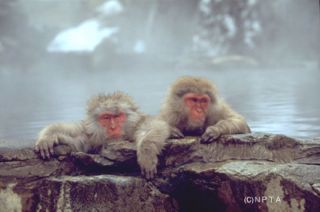 |
|
percent of all alcohol consumed in Japan, saw in calendar-year 2011 its first increase in consumption in 16 full years. Last year (2011) was a complex one with many factors affecting sake consumption. But still, the momentum continued into 2012, and many thought this was the beginning of the long anticipated and sorely needed “
sake comeback.” Yeah, well, don’t call this a comeback. Not yet, anyway.
To be sure, through most of 2012, statistics showed another modest increase. Things continued to get better – admittedly to the tune of single-digit increases – but better nevertheless. But in the fall, unpredictably, things worsened.
Just when sake should go into its peak consumption period, sake-drinking fell off significantly. Like, ten percent. Reasons given were, firstly, the heat. Summer just refused to “go gentle into that good night” that is the cooling autumn, and so consumers stuck with beer. Another reason was the lay of the calendar saw two full less sales days. While this may at first seem silly, consider that when you have 30 days in a month and eight are weekend days, we have 22 sales days, and two are almost ten percent of that. Voila! Ten percent down over the previous year.
 |
|
But… I dunno. Blaming it on the weather and the calendar are a bit suspect to me. And on top of that, the comeback is still alive, at least measurably so. The sales director for one large brewer expected an increase this year of four to five percent overall. Even more significantly, premium sake sales will be beyond that.
Note, too, that the above is all related to domestic consumption. Exports increased about 14 percent this year, based on most recent numbers.
So while things are not moving at the blazing pace we all (save shochu and beer producers) would like to see, and it would not likely be considered a comeback in most arenas, we are slowly, steadily moving in the right direction.
|
|
Did You Know? Color in Sake
Most sake is, when we get it, close to transparent. But it was not always
this way, and that statement is meant both in terms of one given sake, and sake in general over history.
When sake is first born, i.e. separated from the rice lees after a month-long fermentation, it has a lovely light amber tint to it; in fact, some just-pressed sake can have almost a green tint to it that is indeed truly beautiful.
However, sake is soon stripped of that via charcoal filtration. Active powdered charcoal is mixed into the sake (temporarily turning it ink-black!), and when that is filtered out it removes the coloring aspects to some degree, as well as some rougher flavors. This is a surprisingly precise operation, and can be adjusted fairly minutely. It can also be overdone, not surprisingly.
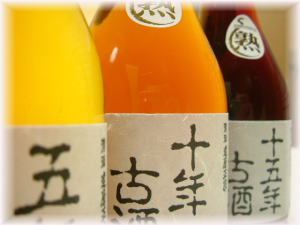 |
|
Why is this done? Because color in sake somehow, sometime, somewhere along the line became associated with something less than full purity and freshness. Shame, that. To be sure, sake does take on color as it ages, but the presence of color does not necessarily indicate age or roughness. Not at all.
Has it always been this way? Heaven’s no. It all began, goes the word on the sake-street, about 40 years ago in Niigata, and soon caught on all over the industry. And to be fair, there are some sake out there that are not charcoal filtered, and as such proudly display that goldenrod luster. Such sake will often (but not obligatorily) have “muroka” (unfiltered, slight misnomer though it may be) on the label. Muroka, for our intents and purposes, means “not charcoal filtered,” and usually will maintain the original amber-green-goldenrod tint. It’s natural, and its beautiful.
|
|
Sake Brewery Tours Expands!
Akita! Kansai! More than just sake! Make 2013 the year you participate!
In 2013, you have more opportunities to experience sake.
Sake Brewery Tours will have two 5-day tours: one to Akita and one to Kansai (Kyoto, Nara and Shiga). Kansai has been added as a new destination this year!
In addition, Nippon Travel Agency, one of the largest travel agencies in
Japan, just announced the schedules for two tours for their "Exclusive Sake Tour" program to central Japan, for which they will be partnering with Sake Brewery Tours. Don't miss the chance to sign up early registering before November 30. Space is extremely limited, so act now. Learn more here.
Details of the Akita and Kansai regions are as follows.
Akita – four breweries
February 23 (Sat) - 27 (Wed): Yuki no Bosha, Ama no To,
Manabito/Mansaku no Hana, Kariho
Kansai – 3 breweies
March 4 (Mon) - 8 (Fri): Tsuki no Katsura (Kyoto), Shichihon Yari (Shiga), Harushika (Nara)
In addition, the Kansai tour will include an optional visit to Tamagawa in Kyoto to see the only non-Japanese toji in history, Mr. Philip Harper on March 9th.
 |
|
Both tours will include some very special features. In addition to learning from the world's best sake sensei, John Gauntner, we will spend a lot of time at sake breweries, dine with kuramoto, and dive into cultural activities, which include:
Akita - making soba at the Kariho brewery, a cooking lesson from a local expert at a farm, a visit to Mr. Ito's (the owner of Kariho) historic private residence, a private minyo folk music performance and a tranquil stay at Tsuru no Yu onsen (hotspring). Learn more here.
Kansai - Food and sake parings only available in the area, using local
delicacies such as funazushi and a lunch with local game meat with the owner of Shichihon Yari, a one day excursion to the Shigaraki pottery region with Rob Yellin, a visit to a yuba (a creamy soy vegetarian food, a by-product of tofu) maker, and join the Goma fire ritual performed by Ajari, a Buddhist monk who went through the Sennichi Kaiho-gyo, a seven-year marathon pilgrimage and spiritual quest.
This is really the ultimate Japan experience - all packed into five days.
Learn more here.
To find out more about Nippon Travel Agency's Exclusive Sake Tour in
January and March, visit this site. |
|
 Announcements and Events Announcements and Events
Sake Professional Course
Japan, January 21 ~ 25, 2012
Only four seats remain open!
The next Japan-based Sake Professional Course will take place the
week of January 21 to 25, 2013, in Tokyo, Kobe, Kyoto and Osaka, Japan. This is it, folks, the most important thing I do all year.
The Sake Professional Course, with Sake Education Council-recognized Certified Sake Professional certification testing, is by far the most intensive, immersing, comprehensive sake educational program in existence. The course is identical to the US-based course, but with two days of brewery visits - impossibly tiny to incredibly huge - tacked on to the end. Furthermore, each evening is spent eating in fine restaurants with the best sake in the world.
The five days together leave "no sake stone unturned."
The tuition for the course is JPY180,000 (at 80 yen to the dollar, about $2250). This includes dinner each night as well as all course materials, but does not include transportation or lodging. For more information about the daily schedule and to read a handful of testimonials, click here Feel free to contact me directly at sakeguy@gol.com with any questions about the course, or to make a reservation.
~~~~~~~~~~~~~~~~~~~~
Demons, Gods and Sake (Tipsy Sensei #4)
By Richard Auffrey
Just out in both ebook and printed format, one of the few works of
 |
|
sake-related fiction out there is now available. Check it out on Amazon here. Surely nothing goes better with late-night sake sipping than a sake novel! And a mystery no less!
From the Amazon page above:
To the Japanese, the number 4 is considered unlucky because it is sometimes pronounced "shi," which is also the word for "death." In Tipsy Sensei #4, there is much death and the entire world faces a dire threat.
Two months ago, Nate Randall, a Sake expert, received an enigmatic phone call warning him that an Oni, a Japanese demon, might be in Boston. After having previously encountered other supernatural creatures from Japanese folklore, Nate had little trouble believing that a demon could threaten Boston.
Now, his fears have come true. A formidable Oni is in Boston, seeking an ancient weapon of power and willing to kill anyone in its way. This weapon might be a legendary sword, the Doji-Giri Yasutsuna, once used to kill the great Oni Shuten-doji.
Nate faces other dangers too, as the Oni is not the only party seeking the weapon. A ruthless Yakuza clan is also involved. Nate soon finds himself being pursued by these enemies as he might possess the key to locating this magical artifact. Nate receives assistance from a mysterious ally, but can he be trusted? And what secrets is that ally concealing?
In his previous adventures, the stakes were on a relatively minor scale. This time, the fate of the world might depend on Nate's actions. Can Nate prevent his enemies from acquiring this powerful weapon? What will he have to sacrifice to prevent his enemies from winning?
The action spans the globe, from Boston to Japan, introducing new characters and bringing back others connected to previous stories in the Tipsy Sensei series. The stakes have never been higher, the action has never been more exciting, and the twists have never been more intriguing.
Check out this latest installment in the thrilling Tipsy Sensei urban fantasy series.
~~~~~~~~~~~~~~~~~~~~
Sake Professional Course Level II
The Level II Sake Professional Course, with SEC-supported Advanced Sake Professional testing, is scheduled for February 11- 15, 2013. Note that this course is only open to graduates of the Level I course. Should you be interested in attending, please email me with that request.
Sake Education Council Website
Please take a moment to check out the website for the Sake Education Council, the organization behind the Certified Sake Professional and Advanced Sake Professional certifications. We plan to grow steadily, strongly and continually, and we will need the support of all those that love sake to do so. Follow us through the "usual suspects" of social media.
Sake Homebrewer's Online Store
Please be sure to check out Homebrewsake.com for supplies, information and a forum, including lots of supporting information on everything from recipes to history. I have been meaning to mention this site and the gentleman behind it, Will Auld, but have repeatedly forgotten in past newsletters. The site is replete with instruction, augmented with videos, schedules, and more. If you are even remotely interested check this site out right away.
Don't forget the archives!
Older editions of this newsletter are archived here.
Really old editions are archived here.
|
 Sake Education Central Sake Education Central
Sake's Hidden Stories and The Sake Notebook are now available for the Kindle, Nook and iBooks!
The Sake Notebook is now available for the Kindle as well as the Nook. And now, it is available for iBooks on iTunes as well!
Sake's Hidden Stories too is now availabe on the Kindle as well as the Nook. And now, it is available for iBooks on iTunes as well!
Both are
less expensive than their original pdf version too. Now is your chance to learn more about sake from your phone or tablet! Check 'em out!
Sake Dictionary App for the iPhone, iPod and iPad
"For 99 cents, this app ROCKS!!"
-a satisfied customer
There you are, perusing a menu, or standing in front of a shelf of great sake, or perhaps reading a sake newsletter… and up pops one of those hairy, pesky sake terms in Japanese. You know you have heard it many times, but dammit, you just cannot remember what it means now…
No problem! Just whip out your iPhone or iPod and fire up your trusty old version of
The Sake Dictionary. In a matter of seconds, you’ll be amongst the cognoscenti once again. But… if only you could pronounce it properly. Now that would really rock!
Done! Just tap on the term and you will hear a clear example of how to pronounce the term in Japanese. Repeat it a couple of times and the term is yours for eternity, to toss about and impress your mates.
What’s more, it’s
less!
Less than what it cost before, much less. Like less than one-seventh less. For a limited time only, the audio-enhanced version of The Sake Dictionary iPhone app is available for a mere $0.99.
|
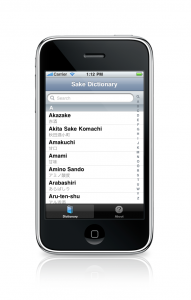 |
|
|
The Sake Dictionary is a concise little package of all the terms you might ever come across when dealing with sake. Almost 200 of them - including sake grades, rice variety names, seasonal sake terms, special varieties, rare types, post-brewing processing words and the myriad terms used in sake production - many of which are not even familiar to the average Japanese person on the street - are listed up here with concise, useful and clear definitions and the written Japanese version as well. And now, with the new audio component, you can listen and learn just how to pronounce those terms properly.
Start to toss around Japanese sake terms like you were raised knowing them! Gain a level of familiarity hitherto unimaginable! Avoid frustrating paralysis when faced with a sake-related purchase!
Get your copy of The Sake Dictionary now and never be confused by sake terms - or how to pronounce them - again.
Get it here: http://itunes.com/apps/sakedictionary
(Note if you have already purchased it, this upgrade to the audio version is free. Just go to iTunes and get it!)
|
Are you not getting this newsletter? I realize that is like asking that
"those not present please raise your hand," but for future reference, should you spontaneously stop receiving this newsletter, please go here and sign up again. Should that not work, please go to www.sake-world.com.
Email newsletter services are very careful not to be considered spam enablers, but the problem is that often very valid email addresses come back bounced as invalid. It is an unavoidable problem. So if you or someone you know is not getting this, or stop(s) receiving it inexplicably, please do take a moment to double check that you are still subscribed.
Sincere apologies for the hassle, mixed with gratitude for reading this newsletter. |
I hope you have found the above information helpful and entertaining. For more information about all things sake, please check out www.sake-world.com. Until next month, warm regards, and enjoy your sake. 
Questions and comments should be directed to John Gauntner, at this email address.
All material Copyright, John Gauntner & Sake World Inc.
Regards,
John Gauntner
Sake World, Inc
 . . 
|
|
